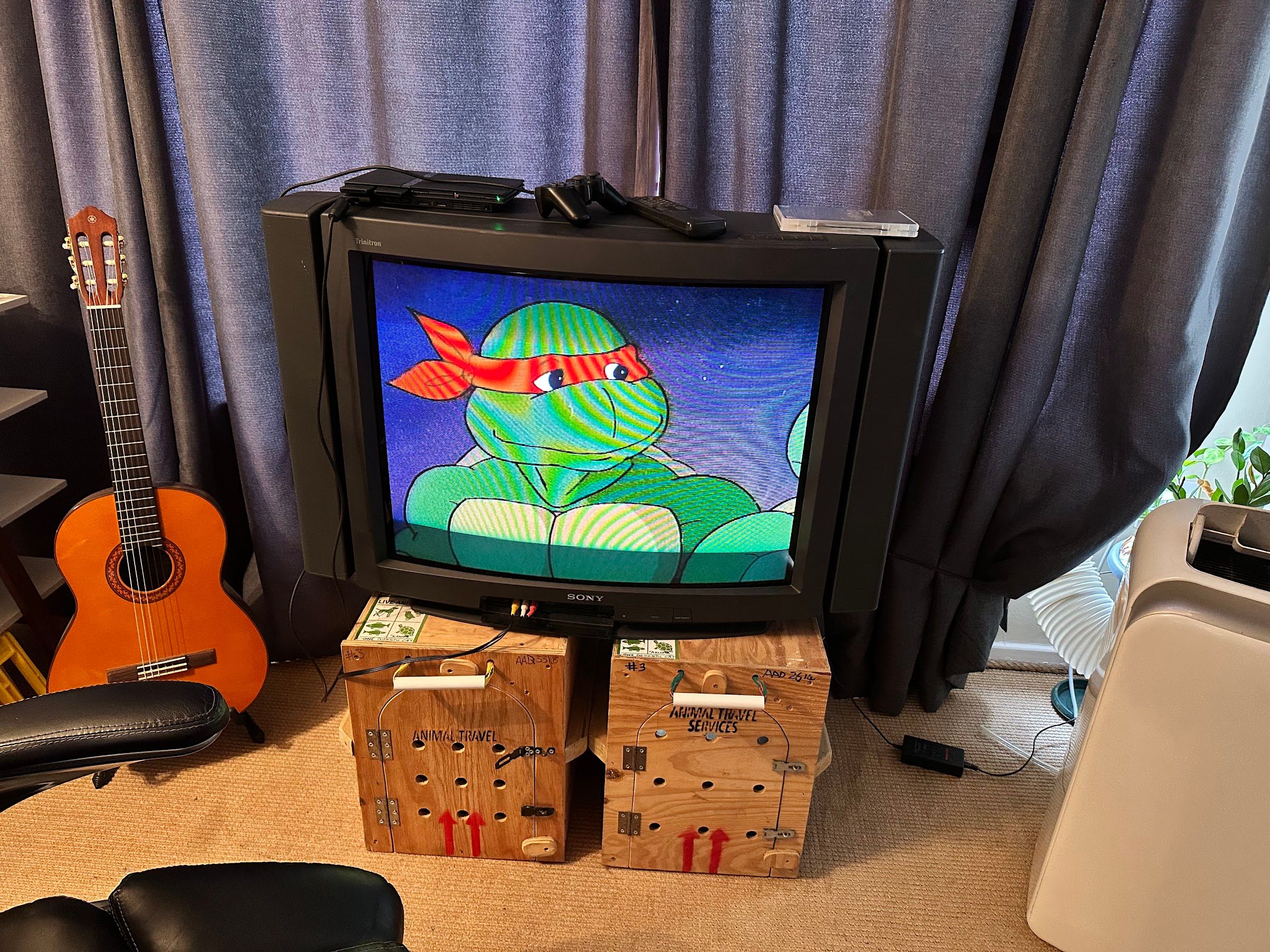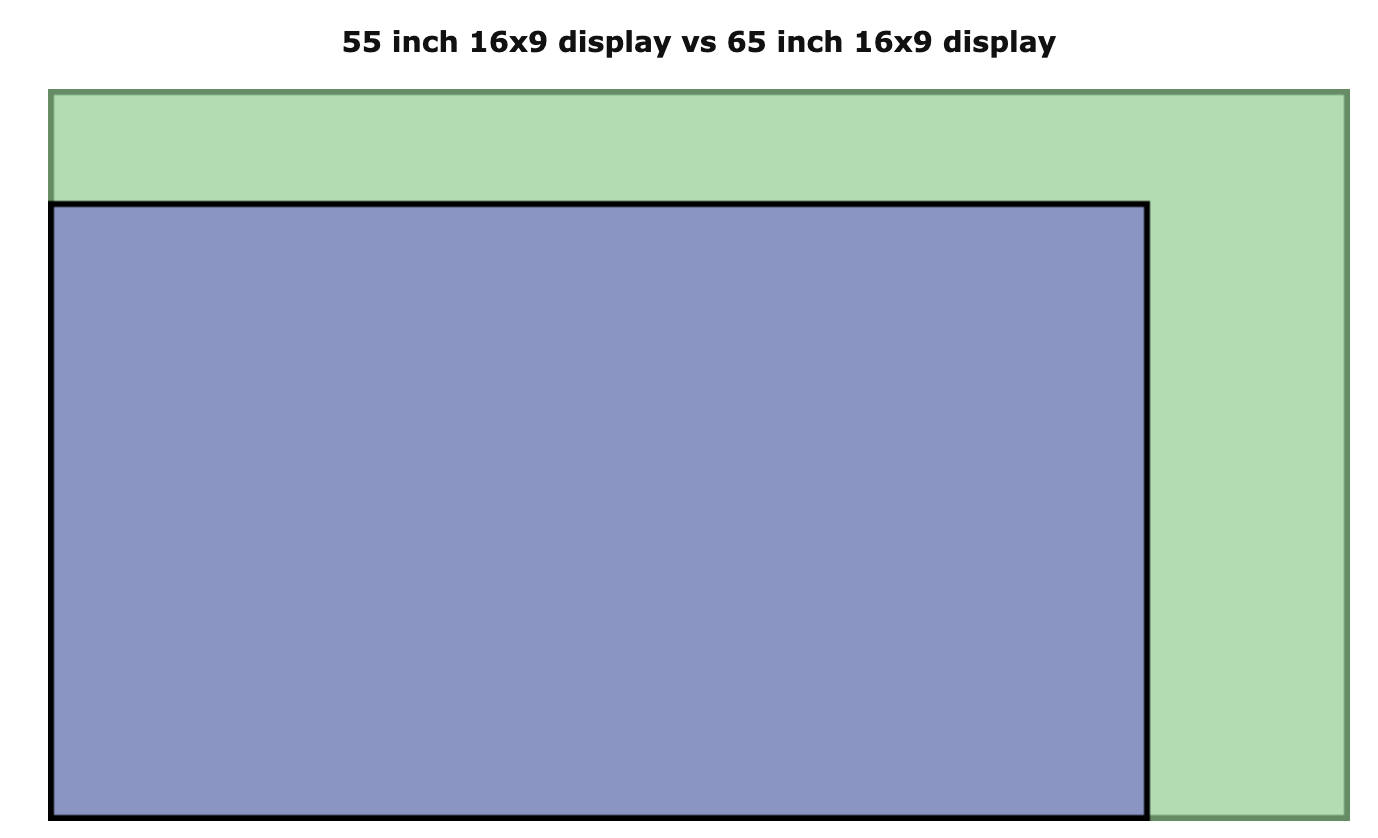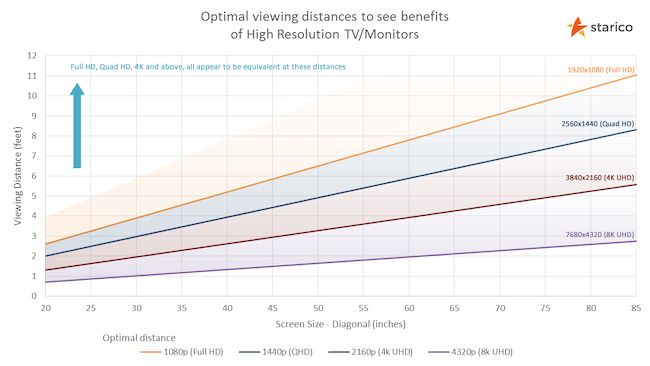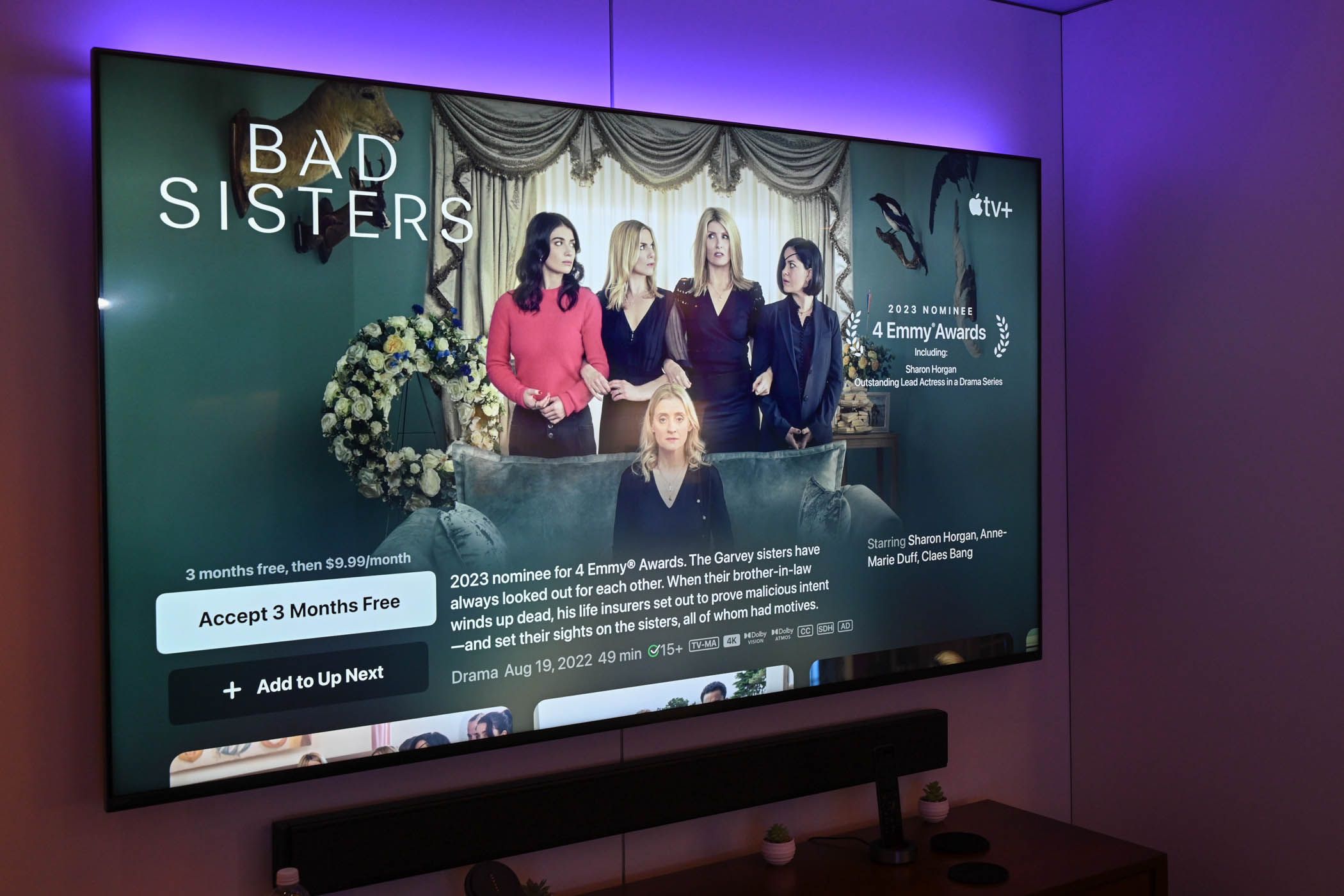When it comes to TVs—size matters! However, it might not matter in the way you think. We have a tendency to think that larger and more expensive TVs are the way to go.
Except, as we trend to screens larger than 55-inches, the returns can diminish, and it may even hurt the experience.
The Inflation of the “Big Screen” TV
What exactly counts as a “big screen” TV? In the age of CRTs a 30-inch TV was considered a large tube, and even now my 34-inch Sony Trinitron CRT is an imposing TV, despite not being quite as big picture-wise as my 55-inch TV that’s nearby it.
Rear projection TVs blew up what people thought of as “big-screen” TV with models up to 100-inches. Of course, since these had a 4:3 aspect ratio, 100-inches means an enormous amount of screen area.
The first flat-panel display I ever bought was a Samsung 51-inch plasma TV, which was considered quite a big screen at the time. The burglar who broke into my apartment and stole it certainly seemed to like it! Most people had a flat-panel TV somewhere between 32 and 48 inches, and something as large as 65-inches was pretty lavish!
Now, a 50-inch TV would be considered quite small by modern standards, and 48-inch TVs are practically computer monitors!
The 65-Inch TV Size Is the Most Popular
With the falling prices of televisions, especially a shrinking of the gap between larger sizes, it seems that American customers have spoken with their wallets, and 65-inch TVs are now the most popular choice. Followed by 55-inch TVs, and then 75-inch TVs.
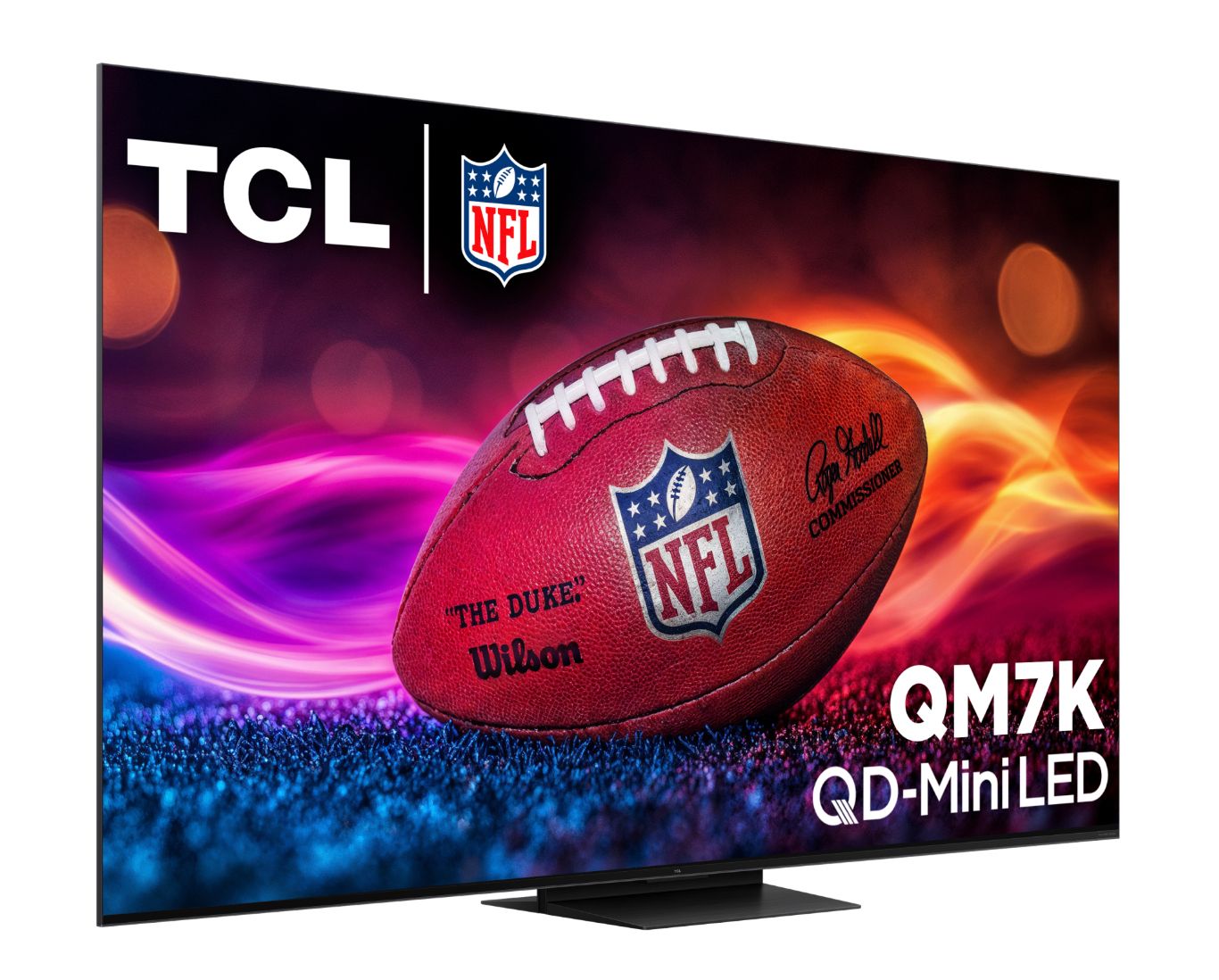
TCL 65-inch (QM7K) Mini-LED TV
$1200 $1500 Save
$300
There’s a substantial size difference, since we’re talking about a diagonal increase in size.
That’s about 1292 square inches vs 1805!
So if a 65-inch TV is only a little more expensive than the 55-inch you may have been eyeing, what’s the harm in upgrading? Usually nothing, but it is worth thinking about whether the TV you’re getting is right for your viewing space.
55-Inch TVs Are Still the Sweet Spot for Many People
The thing is, it’s common to overestimate how big a TV should be. For most people who live in an apartment, or have a living room where the TV is six 6-9ft away, you’re going to have a pretty comfortable viewing experience on a 55-inch set.
Of course, there are lots of rules about this stuff, and it really does depend on your personal needs and tastes to some extent, but for typical smaller living spaces, a 55-inch TV is going to be a great match.
In my previous home, I had a much larger open-plan living area, and so we opted for a 75-inch TV, but when next we had to move, it was simply too big to watch comfortably. Sure, it was sort of cool for a movie night, but just normal TV viewing was a bit of a strain, and so I replaced it with a smaller TV.
As Price Differences Shrink, Bigger Seems Better
It’s tempting to think of the value of a TV in terms of dollars per (square) inch but if I had to choose between a mid-range 65-inch LCD or a 55-inch OLED, I’m picking the OLED every time. If the only difference between two TVs is their size, and they are otherwise the same, then that’s one thing, but if you have to make image quality compromises to hit larger sizes, that’s where it becomes a bigger debate.
Don’t forget that all 4K TVs offer you the same resolution, so when you blow up the size of the screen, you’re increasing the size of the actual pixels. Which means you need to sit further back to be in the optimal spot. This means that if you buy a 55-inch TV (or any smaller size), you can get the same effective immersion and image quality by simply sitting closer to the TV.
In my opinion, it only makes sense to pay for larger sizes of TV when the viewing room forces you to be a specific distance from the TV. It’s that distance that determines the best size of TV for your needs, along with the number of people who are watching at the same time, and the seating arrangement.
I’ll Be Holding On to My 55s for a Long Time
Since it’s only myself and my wife in our home, our 55-inch OLED is exactly right for our needs, and the 55-inch QLED I use for my personal media setup in my office is just about tolerable at six feet away.
However, I think that for an average family home, 55-inches is indeed too small, and that the move to 65-inches is probably the right one for most people in that situation.


